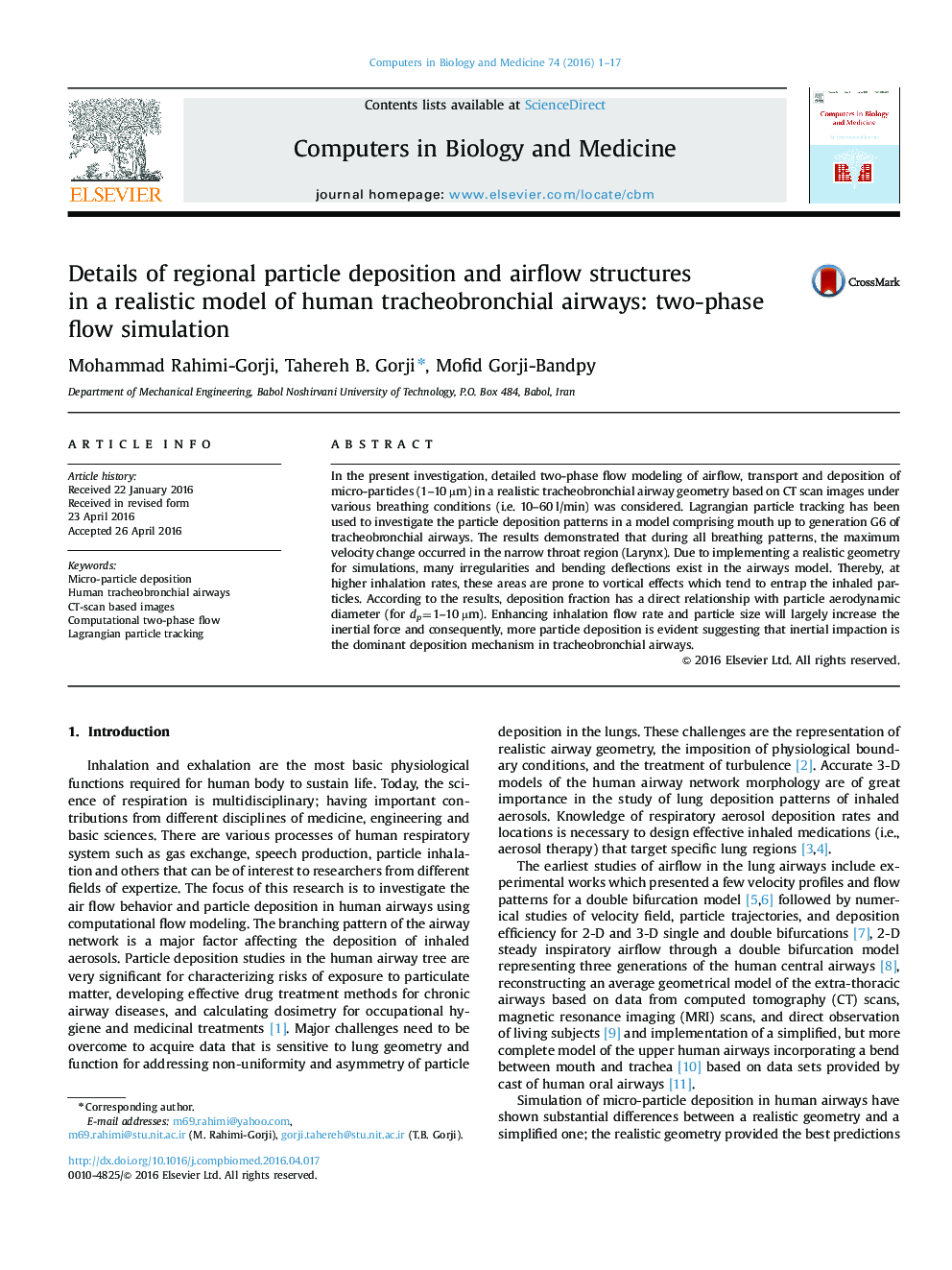| کد مقاله | کد نشریه | سال انتشار | مقاله انگلیسی | نسخه تمام متن |
|---|---|---|---|---|
| 504784 | 864430 | 2016 | 17 صفحه PDF | دانلود رایگان |
• Two-phase flow simulation of airflow and particle transport and deposition in a human tracheobronchial airway model comprising oral cavity up to generation G6 was considered.
• Numerous irregularities and bending deflections existing in the airways model, results in asymmetric particle transport and deposition patterns.
• Based on the results, for patients with left bronchus disease, it is recommended to take medication in heavy breathing condition to enhance the percentage of particle deposition in the left bronchus.
In the present investigation, detailed two-phase flow modeling of airflow, transport and deposition of micro-particles (1–10 µm) in a realistic tracheobronchial airway geometry based on CT scan images under various breathing conditions (i.e. 10–60 l/min) was considered. Lagrangian particle tracking has been used to investigate the particle deposition patterns in a model comprising mouth up to generation G6 of tracheobronchial airways. The results demonstrated that during all breathing patterns, the maximum velocity change occurred in the narrow throat region (Larynx). Due to implementing a realistic geometry for simulations, many irregularities and bending deflections exist in the airways model. Thereby, at higher inhalation rates, these areas are prone to vortical effects which tend to entrap the inhaled particles. According to the results, deposition fraction has a direct relationship with particle aerodynamic diameter (for dp=1–10 µm). Enhancing inhalation flow rate and particle size will largely increase the inertial force and consequently, more particle deposition is evident suggesting that inertial impaction is the dominant deposition mechanism in tracheobronchial airways.
Journal: Computers in Biology and Medicine - Volume 74, 1 July 2016, Pages 1–17
